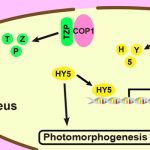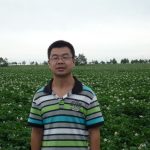Franziska Fichtner: Plant Physiology First Author

 Franziska Fichtner, first author of “Plasticity of bud outgrowth varies at cauline and rosette nodes in Arabidopsis thaliana”
Franziska Fichtner, first author of “Plasticity of bud outgrowth varies at cauline and rosette nodes in Arabidopsis thaliana”
Current Position: Postdoctoral Research Associate, ARC Centre of Excellence in Nature and Agriculture and the School of Biological Sciences, The University of Queensland, St Lucia, Australia
Education: PhD in Molecular Plant Physiology at the Max Planck Institute of Molecular Plant Physiology and the University of Potsdam, Germany; Master of Science in Plant Science, Rheinische Friedrich-Wilhelms-Universität Bonn, Germany; Bachelor of Science in Biology, Westfälische Wilhelms-Universität Münster, Germany
Non-scientific Interests: reading, travelling, politics, hiking
Brief bio:
My research focuses on the connection between the plant’s metabolism and its phenotype. During my current postdoc at the University of Queensland in Christine Beveridge’s lab, I investigate how sugar and phytohormone signalling pathways are connected to regulate shoot branching in arabidopsis (Arabidopsis thaliana) and pea (Pisum sativum). I did my PhD in the group of Mark Stitt at the Max Planck Institute of Molecular Plant Physiology where I started to work under the supervision of John Lunn on the nexus between plant metabolism and development, with a special focus on trehalose 6-phosphate (Tre6P) and sugar signalling. In my current position I am now trying to understand how sugar signalling especially via Tre6P (an important hormone-like sucrose specific signalling molecule) modulates shoot architecture, how sugar and phytohormone signalling pathways interact and to elucidate the molecular mechanisms involved. My current study demonstrates that cauline (located on the main bolt) and rosette (deriving from the axils of rosette leaves) bud outgrowth is differently regulated with cauline branching being mainly influenced by photoperiod. Rosette bud outgrowth on the other hand shows an enormous plasticity being influenced by light (so potentially sugars and Tre6P), temperature and flowering. This work thus provides a new framework for future branching analyses.



